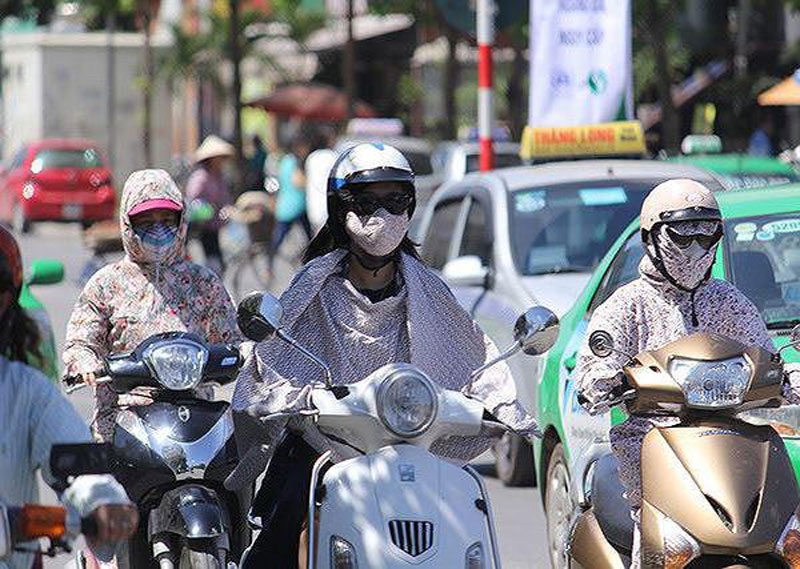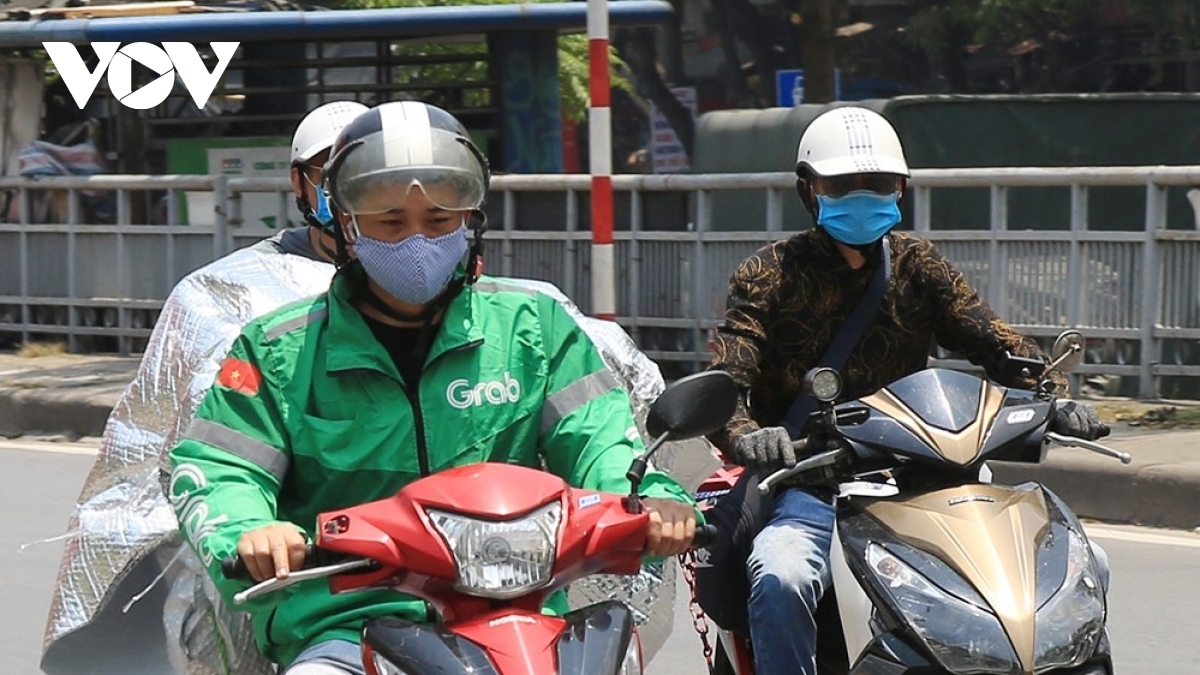 |
| In the face of this prolonged heat wave, people try everything to fight against the heat. Source: NDO |
Northern and central regions, including Hanoi, have been hit by a major hot spell this week as temperatures climb to highs of over 40 degrees Celsius. This prolonged heat wave can put us at risk of heat illness.
Three common heat-related illnesses include heat cramps, heat exhaustion, and heatstroke. Heat cramps and heat exhaustion are less severe than heatstroke, but they can all be avoided if you take time to rest, drink enough fluids, and spend time in cool areas when they’re available.
According to the Australian Red Cross, the heat can affect anyone, but some people are more at risk because their body doesn’t regulate heat well, including: older people, babies and young children, people with mental-health conditions, people on certain medications, people with chronic conditions (such as breathing or heart problems), people with limited mobility.
As heat waves are common and intense in summer, the risk continues to rise. Here’s how to make sure you’re prepared.
Depending on a person’s age, presence of chronic medical conditions, and the amount of fluids they’ve consumed, heatstroke — especially in temperatures in the triple digits — can occur in just a few short hours.
Usually, a healthy core body temperature is somewhere around 37 C. But if it climbs to 40 C internal organs — including your brain — may become damaged.
 |
| Shippers are busier around midday following eateries being forced to close and only allow take-away services as a means of combatting the Covid-19 pandemic. Source: VOV |
From the least serious heat-related illness to the most serious, here’s how to identify and treat them:
Heat cramps: The result of dehydration and low salt levels
Symptoms:
– Painful muscle cramps and spasms usually in the legs, arms, and abdomen
– Heavy sweating
What To Do:
– Stop the activity and get to a cool place to rest
– Apply firm pressure on the cramping muscles or gently massage them to relieve the spasms
– Give sips of water unless there’s nausea, then do not give water
– Ease cramps by stretching
– Try ice packs to see if they help
Heat Exhaustion: The result of dehydration and prolonged over-exertion
Symptoms:
– Fatigue
– Heavy sweating
– Weakness
– Cool, pale, clammy skin
– Fast, weak pulse
– Possible muscle cramps
– Dizziness
– Nausea or vomiting
– Fainting
What To Do:
– Move to a cooler environment (air-conditioned room, underneath a fan)
– Lay the person down and loosen or remove their clothing
– Apply cool, wet cloths to key areas, such as the groin, armpits, back, and neck, or bathe in cool water
– Offer sips of water
– Get medical help right away if there’s no improvement within an hour or if they vomit more than once
Heatstroke: The result of the body’s inability to regulate its temperature. It can be life-threatening.
Symptoms:
– Altered mental state (disorientation, confusion)
– Throbbing headache, confusion, nausea, dizziness, shallow breathing
– Body temperature above 39.4°C
– Hot, red, dry skin
– Lack of sweating
– Rapid and strong pulse
– Fainting or loss of consciousness
What To Do:
– Seek immediate medical attention and begin cooling the person while waiting
– Move to a cooler or air-conditioned place
– Cool the body with cool cloths or a bath
– Do not give fluids
– Depending on the severity of the heatstroke, recovery can take several days. Left untreated, experts say, heatstroke can cause lasting damage to your brain, muscles, kidneys, and other important organs. Sometimes imaging, intravenous fluid resuscitation, and medication are required.
|
Prevention is always better than cure. We should take appropriate measures no matter working at an indoor or outdoor workplace (e.g., warehouses, docks, construction sites, container yards, kitchens, and laundry rooms, etc.). For instance, wearing loose-fitting, lightweight, and light-colored clothing will facilitate perspiration and reduce body heat. Taking rest in a cool place at certain times of work is also recommended. In addition, you are advised to drink a sufficient amount of water or other appropriate beverages to replenish fluid and electrolytes lost, avoid beverages that include alcohol, coffee, tea, or caffeine to prevent dehydration. Last but not least, give yourself time to acclimatize. If you’re not used to the heat, allow time for your body to adjust. This is particularly true for people who might be moving to a new climate or traveling. |



